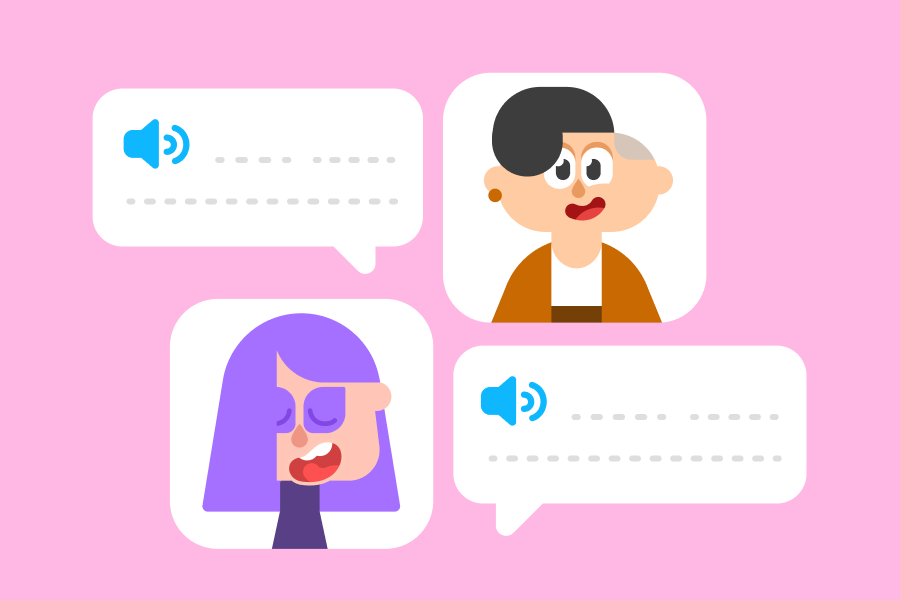Learning a new language can be challenging, but that doesn’t mean it can’t be fun! In fact, varying how you study isn’t just enjoyable, it’s also good for motivation and for helping you remember what you’ve learned.
We asked our Duolingo teaching experts for their favorite ways to study and practice a new language. Their number one tip? Get comfortable feeling a little silly in your new language! Try using the language in these new ways to build confidence and speaking skills. And yes, one of their suggestions is actually “Watch TV.”

Change how you think.
| “One thing I’d do that really helped me learn is that I’d mentally narrate my day in the language I was learning. I’d constantly think to myself things like, “And now I’m looking for my keys. I can’t find my keys. Where did I put my keys yesterday?”, making my inner monologue be in Russian. It was really good for finding out where I had gaps in my knowledge, what bits of grammar I struggled with, and so on.” |

|
|
PhD in Slavic Languages and Literatures, currently studying Korean on Duolingo |
|
Talk to yourself (no judgment!)
If you can’t quite get your brain to narrate in a different language, try speaking out loud to hold yourself accountable to practicing the language every day.
| “In high school, I tried to make it a habit to talk to myself in Spanish while I was driving or going for a walk. This really helped me get used to thinking in Spanish and it helped me feel comfortable moving my mouth in a new weird way.” |

|
|
PhD in Hispanic Linguistics, currently studying French and Mandarin Chinese on Duolingo |
|
Write your own memorable scene.
James also helped remember phrases and important verb conjugations by creating vivid, melodramatic scenes. No wonder he’s a master of Duolingo’s signature quirky sentences! Here’s how he did it:
“For example, the Spanish verb decir “to say” becomes “di” say! when you give a command. To memorize the verb di, I imagined someone passing out on a soap opera and their family members crowding around, saying ¡Di algo! “Say something!” as they tried to shake the individual back into consciousness.”
Get in character with Duolingo Stories.
Did you know that certain courses allow you to read short stories on Duolingo? They’re great for practicing reading and listening (they’re performed by real speakers!), and they pack as much drama as any telenovela.
You can produce your own Duolingo Story with a friend or family member for speaking practice, or make it a one-person show and play all the characters!
Play copycat.
Imitation is the highest form of flattery — and it’s helpful for learning! Sing, shadow, and repeat everything you hear in the language, from your Duolingo lessons to music to TikToks. The Duolingo Podcast is another opportunity to hear speakers around the world using natural, conversational language that you can co-opt for your own speaking practice.
| “For pronunciation, I used music and other recordings and tried to sound just like the speaker on the recording. I sang along to my favorite songs and said my favorite lines of movies along with the actors.” |

|
|
PhD in French Linguistics, currently studying Spanish on Duolingo |
|
Learn while you watch a new show...
Another popular tip among our teaching experts was watching TV or movies in your new language — which is the perfect excuse to finally watch Lupin, for the sake of learning.
| “When I was learning English in Ukraine, the most helpful thing to do was to watch my favorite movies with subtitles, record useful expressions, including some colloquial phrases, and then re-watch them numerous times. I wanted to make sure those expressions would definitely stick. Eventually, I turned off the subtitles.” |

|
|
MEd Instructional Design and MA Linguistics, currently studying French and Spanish on Duolingo |
|
…Or binge old favorites in a new way.
It’s ok to start out with subtitles in your own language, but don’t be afraid to switch them to your new language, especially for shows you’re already familiar with. All the action will help you piece the language together!
| “In general, I like using film for language learning because the visual input really helps make the meaning of the language input clear. That, and watching TV shows is fun, so you don’t always feel like you’re working, but you’re definitely learning!” |

|
|
MA in Teaching English as a Foreign/Second Language, currently studying Portuguese and Mandarin Chinese on Duolingo |
|
Language learning should be fun!
Looking for more creative ways to practice? Try these tips to continue honing your new skill.
To get in a daily language habit, download Duolingo on Apple or Google Play stores.
